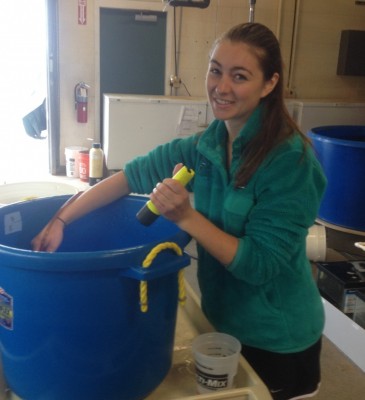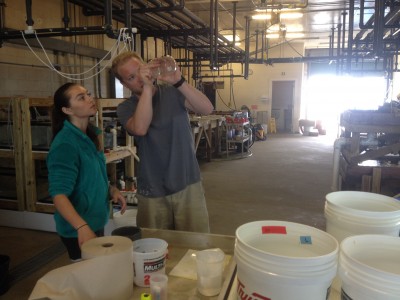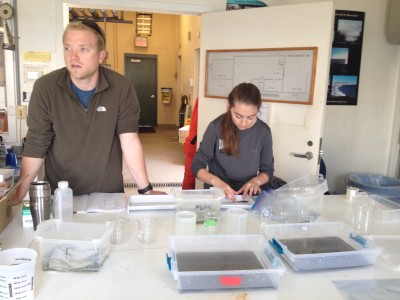


By Molly Hughes
This summer, I was lucky enough to work in the Rankin Lab at Avery Point. I’d been looking for an opportunity to gain lab and field experience in marine biology, particularly in fish ecology and hypoxia research. I could not have had a better experience than volunteering with Hannes Baumann and Chris Murray this summer. Their research combines issues of hypoxia, ocean acidification and fish ecology to give meaningful insight into the range of effects possible under a changing climate.
Volunteering in the lab, I was able to develop practical skills in fish biology that are already coming in handy in my upper level Ichthyology course. In the field, I learned how to use a seining net to catch specimens and identify target species. In the lab I participated in spawning fish, fertilizing eggs and day to day maintenance of larval fish and their environment.
However, just as valuable as practical skills is the perspective I gained from this experience. Before volunteering at the Rankin lab, I’d never considered the importance of creative thinking in research. When Hannes and Chris set out to study the combined effects of pH and oxygen levels on larval fish development, there was no starter kit available for them to do so. They had to create an entirely novel system, and only through resourcefulness and a lot of trial and error were they able to make their idea a reality. For me this meant days of drilling holes in five gallon buckets and hot gluing mesh over them. This was a creative solution to the problem of continuous water flow between the buckets within a tank. Its a comfort to know that my arts and crafts skills have relevance to my aspirations in marine biology.
I also walked away from this summer with an appreciation of the interconnectivity of the sciences and the importance of collaboration. When a fungal pathogen wiped out most of the larvae in the first trial of the Hypoxia/Acidification experiment, we were not equipped to identify it. Neither Hannes nor Chris specialize in mycology, but they were able to reach out to colleagues at Avery Point and Stony Brook who do. This is just one example of the many times I saw Chris and Hannes collaborate with scientists and engineers of different specialties this summer.
This being my first experience in a research environment, I was very fortunate to volunteer in a lab where I was able to gain such a wide range of skills and knowledge. I’m grateful to Hannes and Chris for introducing me to the research world and giving me the confidence to keep pursuing a career in marine biology.